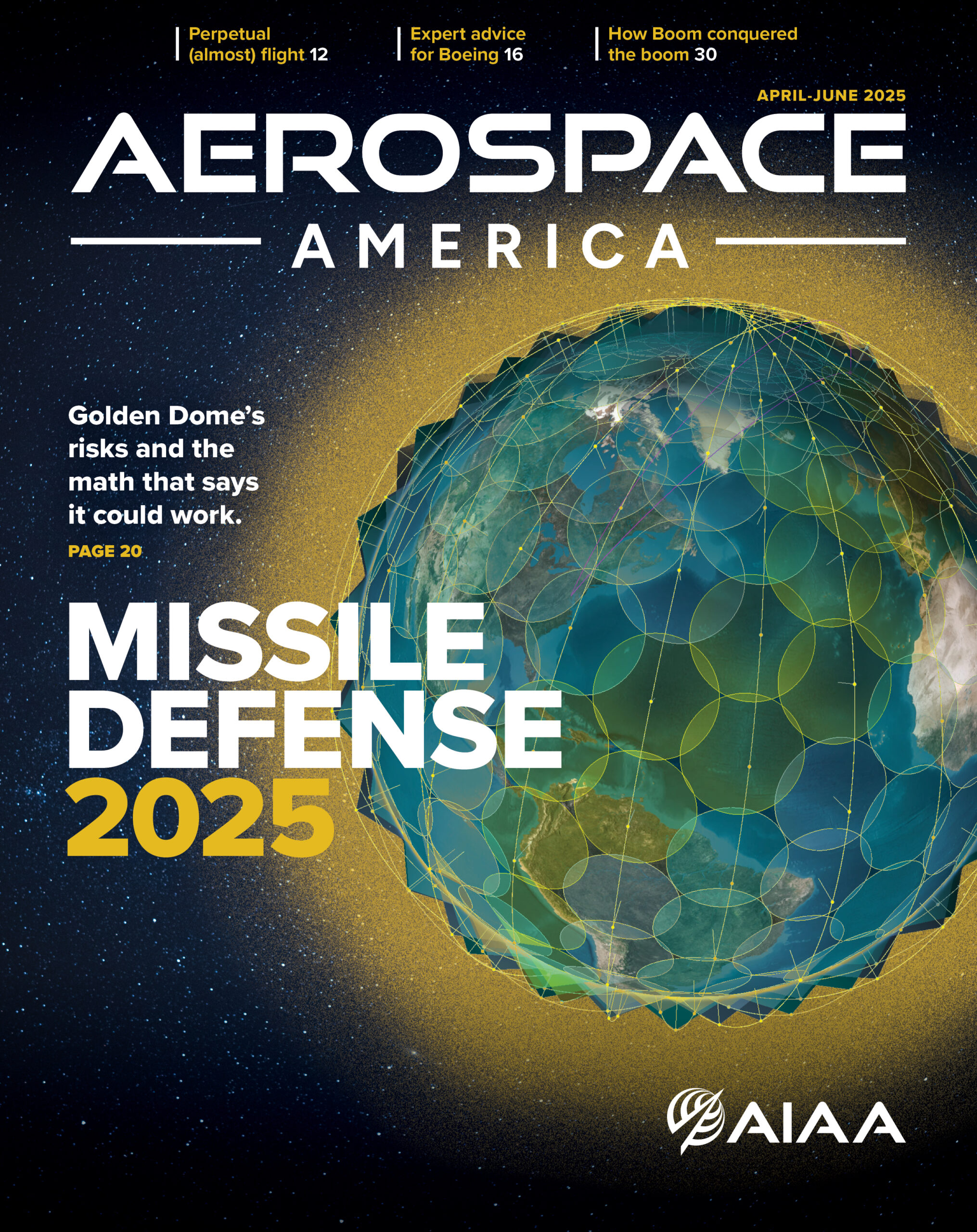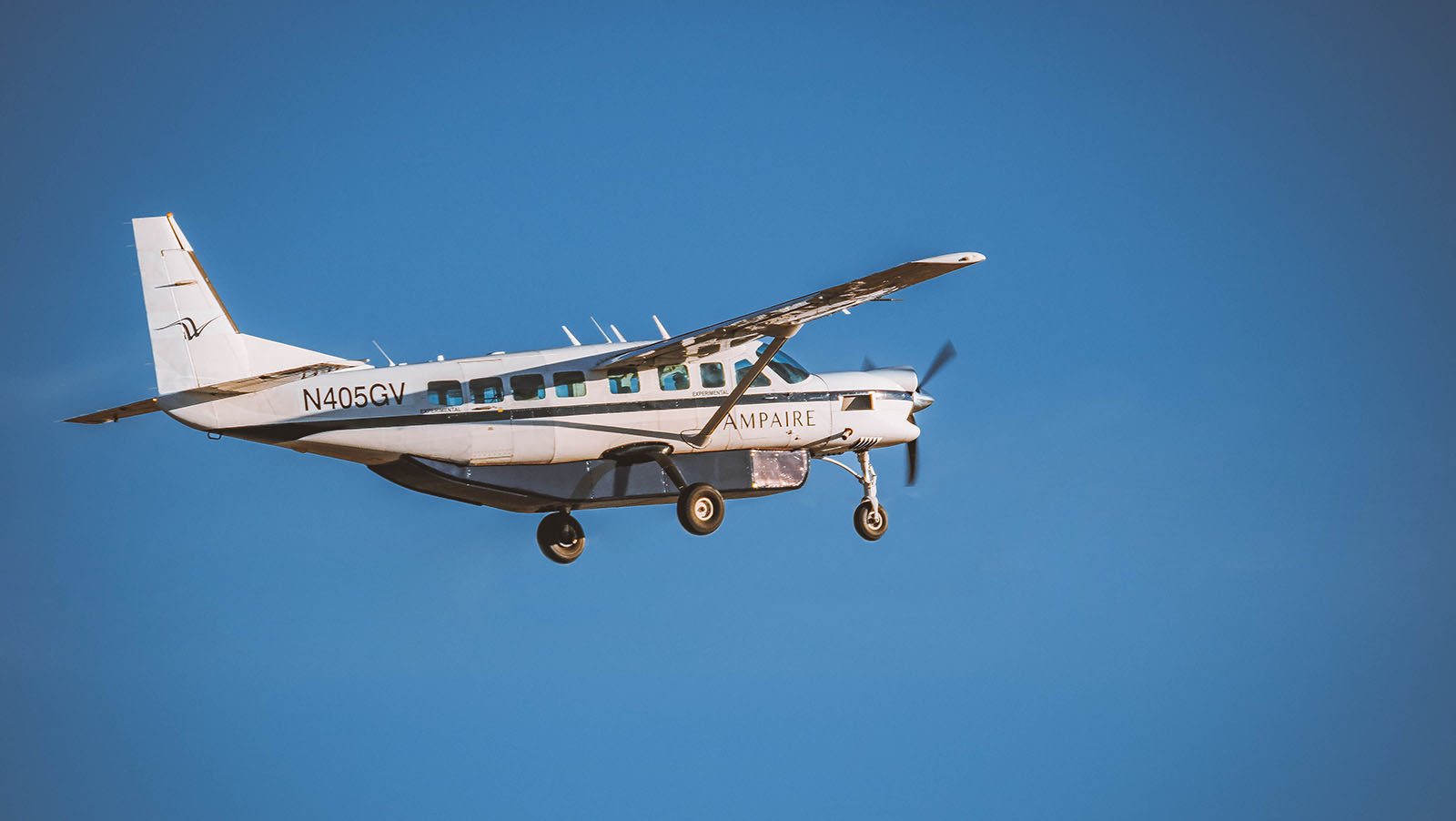Stay Up to Date
Submit your email address to receive the latest industry and Aerospace America news.
The Inlets, Nozzles and Propulsion Systems Integration Technical Committee focuses on the application of mechanical design, fluid mechanics and thermodynamics to the science and technology of air vehicle propulsion and power systems integration.
In February, Ampaire of California announced the completion of its first ground test in which its hybrid-electric Eco Caravan demonstrator ran on 100% sustainable aviation fuel. This retrofitted Cessna Grand Caravan first flew in 2022, its Pratt & Whitney Canada PT6 turboprop engine replaced by a 570-kilowatt AMP-H570 powertrain. The Eco Caravan is a parallel hybrid, consisting of a diesel- cycle engine with an electric drivetrain that both drive the aircraft’s propeller.
In August, the company announced it was preparing for flight tests with 100% SAF. Ampaire anticipates that this conversion will reduce fuel burn and emissions by up to 70%, lower operating costs 25%-40% and extend the range to over 1,100 miles (1,770 km). Once flight tests are complete, the company will perform endurance tests followed by a tear-down of the propulsion system to inspect for effects on the power plant from using 100% SAF.
In September, Heart Aerospace of Sweden revealed its Heart Experimental 1, or Heart X1, demonstrator, an all-electric aircraft that is to begin remotely piloted flight tests in 2025. Heart X1 is to demonstrate the technology for a planned 30-seat ES-30 hybrid-electric regional aircraft. In May, Heart announced modifications to the ES-30 design, including an updated powertrain created from off-the-shelf turboprop engines and electric motors. The earlier design included wing struts, a large battery compartment mounted under the fuselage and a range extension system housed in the rear fuselage comprising twin turbogenerators using SAF — now all gone.
The redesign eliminates the turbogenerators, freeing up that fuselage space for the battery pack, reducing drag and improving crashworthiness, the company says. The new design calls for an independent hybrid propulsion system, consisting of small outboard turboprop engines with large battery-powered electric motor systems inboard. The design will enable flights up to 200 kilometers on battery power with the turboprops feathered. The turboprops could be activated to extend the cruise phase, increasing the range to 800 km, similar to the previous design.
In April, magniX of Washington completed its first phase of altitude testing of electrified powertrain components at NASA’s Neil A. Armstrong Test Facility in Ohio. magniX is developing this powertrain under NASA’s Electrified Powertrain Flight Demonstration project, and plans call for installing the powertrain in a modified De Havilland Canada Dash 7 for test flights in 2026. For the altitude testing, engineers simulated flight conditions at 27,500 feet to determine whether the powertrain could meet performance objectives in the thinner air and greater temperature ranges at that height.
According to NASA’s Brad French, lead systems engineer for the project, such testing is critical for electrified aircraft propulsion technologies because many of the potential problems that a design might encounter only present themselves at higher altitudes. NASA and magniX also investigated the engine’s thermal management system to determine how heat was transferred throughout the machine. Concurrently, magniX performed baseline flight tests with the Dash 7, provided by Air Tindi, so it can compare fuel savings and performance improvements with the hybrid-electric demonstrator. Those flights were completed in June.
Stay Up to Date
Submit your email address to receive the latest industry and Aerospace America news.




